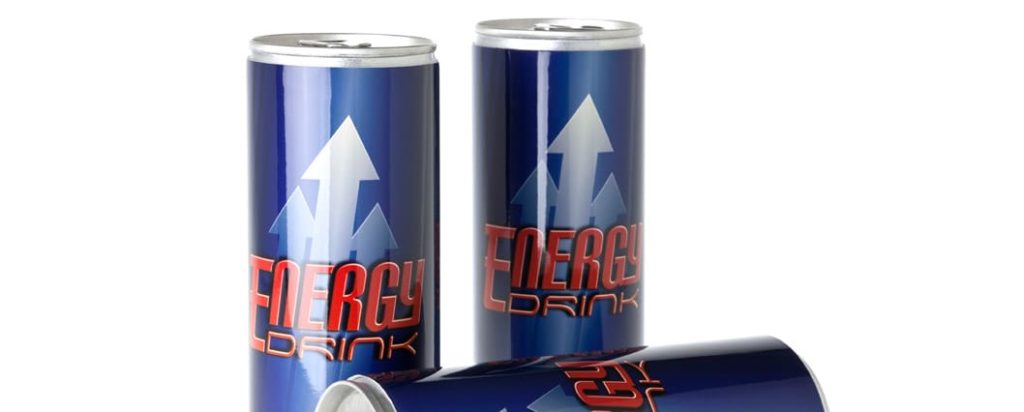Energy drinks are a modern class of beverage that contain some sort of nonprescription stimulant, including substances such as caffeine, guarana or yohimbe. College students and other young adults consume these beverages with some regularity. In a study published in March 2014 in the journal Substance Abuse, researchers from six U.S. universities analyzed the potential connection between frequent energy drink consumption and the odds of abusing a prescription stimulant medication. The researchers concluded that, for at least some populations, frequent intake of energy drinks acts as a predictor for this form of drug abuse.
The Basics
Soft drinks in the U.S. commonly contain caffeine. However, caffeine-base energy drinks typically contain far more of this stimulant than soft drinks. For example, while a relatively high-caffeine soft drink like Mountain Dew contains 55 mg of caffeine, a relatively low-caffeine energy drink usually contains at least 75 mg of the stimulant. At the upper end, some energy drinks contain more than 200 mg of caffeine. Another common energy drink ingredient, guarana, also contains caffeine, although product labels may not state this fact clearly. In addition to yohimbe, non-caffeine-based ingredients found in some products include ginseng and an amino acid called taurine. Potential side effects previously linked to the overconsumption of energy drinks include dehydration, sleeplessness and significant elevation of heart rate and blood pressure.
Prescription Stimulant Abuse
Prescription stimulants are medications that speed up the normal rate of activity inside the brain and spinal cord (central nervous system) and also trigger heightened feelings of pleasure or euphoria, the most well known of these stimulants are probably the ADHD medications Adderall and Ritalin. Adderall contains the stimulant substances amphetamine and dextroamphetamine, while Ritalin contains the stimulant substance methylphenidate. Several medications prescribed for other purposes also contain amphetamine or some other stimulant substance. According to data compiled for the year 2012 by the Substance Abuse and Mental Health Services Administration, roughly 0.5 percent of American adults and teens abuse a prescription stimulant in any given month. This rate of use ranks stimulants as the third most commonly abused mind-altering medications in the U.S. Common reasons for this form of drug abuse include a desire to increase academic performance, a desire to lose weight and the purely recreational desire to get “high.”
Predictor of Stimulant Abuse
In the study published in Substance Abuse, researchers from the University of Florida, Oklahoma State University, the University of Missouri, Penn State University, Logan University and the University of Western States used an assessment of 267 young adults enrolled in college or graduate school to explore the potential connection between energy drink consumption and increased risks for abusing a prescription stimulant medication. Roughly 84 percent of these individuals (who had an average age of just under 23) were undergraduate upperclassmen or graduate students. All of the participants submitted anonymous information on their typical patterns of energy drink consumption, as well as their level of involvement in prescription stimulant use or abuse. After reviewing the data submitted by the study participants, the researchers found that 83 percent of these participants were at least occasional energy drink consumers. In addition, 58 of the 267 people enrolled in the study had taken a stimulant medication in the previous year. Fully 73 percent of these individuals did not have a prescription for the medication they took and therefore clearly qualified as prescription stimulant abusers; in addition, at least three of the participants with a prescription for their medication admitted to using that medication for a reason other than its intended purpose. When the researchers cross-referenced the energy drink consumers with the prescription stimulant abusers, they concluded that frequent consumption of energy drinks acts as a predictor for later involvement in prescription stimulant abuse. They also concluded that any given energy drink consumer’s chances of abusing stimulant medications rises for each day in which energy drink intake occurs.
Significance and Considerations
The authors of the study published in Substance Abuse concluded that, out of all college and graduate students who consume energy drinks, those individuals with particularly demanding majors or career tracks may have the highest chances of becoming prescription stimulant abusers. They believe that future researchers should focus on the specific internal and external factors that make any student more likely to misuse a stimulant medication. In addition, the authors note that their results may not apply to energy drink users in other age ranges or to energy drink users not enrolled in a college or university.

